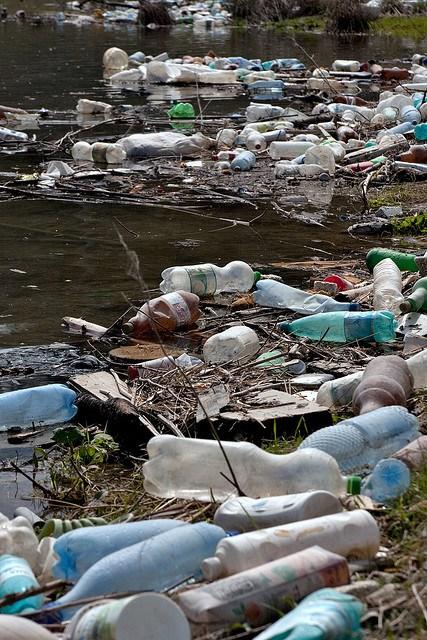
Plastic is used in everything from electronic devices, including computers and smartphones, to food packaging. However, plastic also has a big impact on the environment.
There is a mass of garbage in the Pacific Ocean off the California coast twice the size of Texas, called the Great Pacific Garbage Patch. It outnumbers marine life by 6 to 1. That plastic swirling around in the Pacific makes its way into the food chain as marine life eat small pieces of plastic.
The material is also energy-intensive and requires petroleum to be manufactured. Another key issue with plastics manufacturing is the release of greenhouse gases (GHGs): More than 30 percent of the natural capital costs from GHG emissions released upstream in the supply chain come from extracting raw materials and manufacturing plastic feedstock, according to a report from the U.N. Environment Program (UNEP). Marine pollution has an additional natural capital cost of at least $13 billion.
The total natural capital cost of plastic used in the consumer goods industry is more than $75 billion a year, the report finds. Food companies are the biggest part of that figure, responsible for 23 percent of the total natural capital cost. That figure is especially startling when you consider the brief lifespan of the plastics food companies use for packaging: After food is eaten, their packages are tossed in the garbage can, which is not exactly efficient use of plastic. The toy sector has the highest intensity, at 3.9 percent of revenue, meaning that a higher proportion of their revenue is at risk.
Plastic use poses risks not only to the environment, but also to manufacturers and companies who use the material. The report cites several, including:
- The impact of tougher environmental legislation such as bans on disposable plastic bags, carbon pricing schemes and chemicals regulation
- Damage done to a brand’s reputation by campaigners who target them over their association with plastic litter
- Cleanup costs
- Disruption to the plastic supply chain caused by resource scarcity and price volatility
Despite the risks, the report finds that levels of disclosure on plastic are “poor.” Only about half of the 100 companies assessed “reported at least one item of quantitative data on plastic.” The disclosure rates among various sectors varies. No footwear and athletic goods companies reported any “useable quantitative data points,” while 88 percent of companies in the durable household goods sector and 71 percent in the personal products sector did.
The report recommends several things companies can do to deal with the risks associated with plastic. One is to take action to reduce the risks of plastics. A place to start is using the research in the report to build a business case to take to the board. Companies can begin measuring and reporting their use of plastic like they do with other environmental impacts, and they can disclose how plastic is used in their products and packaging. Some specific steps companies can take include switching to recycled plastic, investigating using bioplastic, reducing the weight of plastic in products and packaging, and working with governments to develop legislation and waste management infrastructure.
Image credit: Horia Varlan

Gina-Marie is a freelance writer and journalist armed with a degree in journalism, and a passion for social justice, including the environment and sustainability. She writes for various websites, and has made the 75+ Environmentalists to Follow list by Mashable.com.














